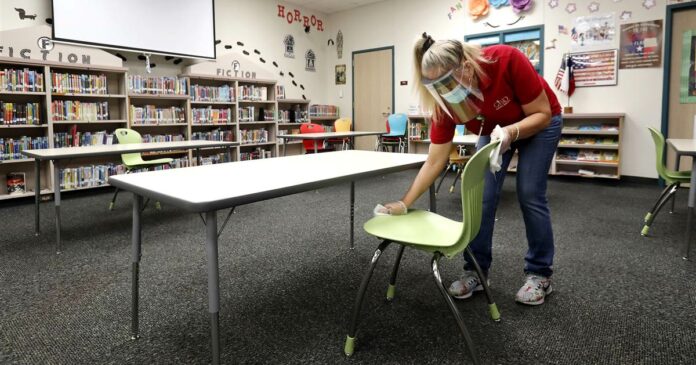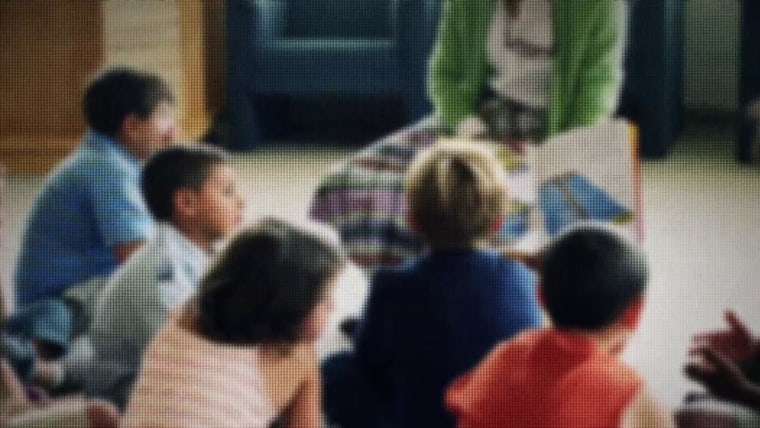WASHINGTON — With some school districts just weeks away from the start of the academic year, the Centers for Disease Control and Prevention released long-awaited guidelines Thursday for reopening with a heavy emphasis on getting students back into the classroom.
The guidelines lay out the social, emotional and mental risks of keeping students at home and give broad outlines on how to resume in-person instruction in line with what the CDC has already recommended to other entities, like practicing good hygiene, disinfecting surfaces regularly and spacing out students to maintain social distancing.
Other recommendations include repurposing unused or underused buildings or moving classes outside when possible, as well as keeping students in “pods” where the same groups stay together throughout the school day. Schools are also encouraged to have plans for what to do when someone gets sick, with the guidelines saying it wouldn’t be necessary for an entire school to shut down if a single person tests positive.
Let our news meet your inbox. The news and stories that matters, delivered weekday mornings.
Some of the largest school districts in the country have already said they won’t be bringing students back to the classroom, choosing to operate remotely, instead. In announcing the guidelines, President Donald Trump suggested that districts’ decisions not to resume in-person learning was politically motivated, and he threatened again to pull federal funding for schools that don’t open their doors.
Full coverage of the coronavirus outbreak
“I hope that local leaders put the full health and well-being of their students first and make the right decision for parents, teachers and not make political decisions. This is about something very, very important,” Trump said.
He said funds for schools that don’t reopen should be diverted to parents, who could choose to send their children to private or charter schools.
Schools are struggling to find the funding to meet students’ additional needs during the coronavirus pandemic, like providing hand sanitizer, laying on extra buses to allow for social distancing and offering multiple copies of materials so students don’t have to share.
“If the school is closed, the money should follow the student so the parents and families are in control of their own decisions,” Trump said. “So I would like the money to go to the parents of the student.”
The White House has emphasized that the guidance is only a recommendation and won’t replace state and local decision-making. Interim guidelines on reopening schools have been available on the agency’s website since mid-May.
In line with Trump’s push to have schools open by the fall, the CDC’s guidance puts a sharp focus on the necessity of in-person learning, outlining the social, emotional and physical toll on students if they aren’t in the classroom.
But it also emphasizes that there is a physical risk to returning. The guidelines say some children may be at increased risk of severe illness from the virus, like those who have developmental disabilities, underlying conditions, certain neurological conditions or congenital heart disease.
“Parents, guardians, and caregivers should weigh the relative health risks of COVID-19 transmission from in-person instruction against the educational, social-behavioral, and emotional risks of providing no in-person instruction when deciding between these two options,” the guidelines say, adding that “if you, your child, or a household member are at increased risk for severe illness from COVID-19, you will need to weigh the benefits, risks, and feasibility of the educational options available.”








